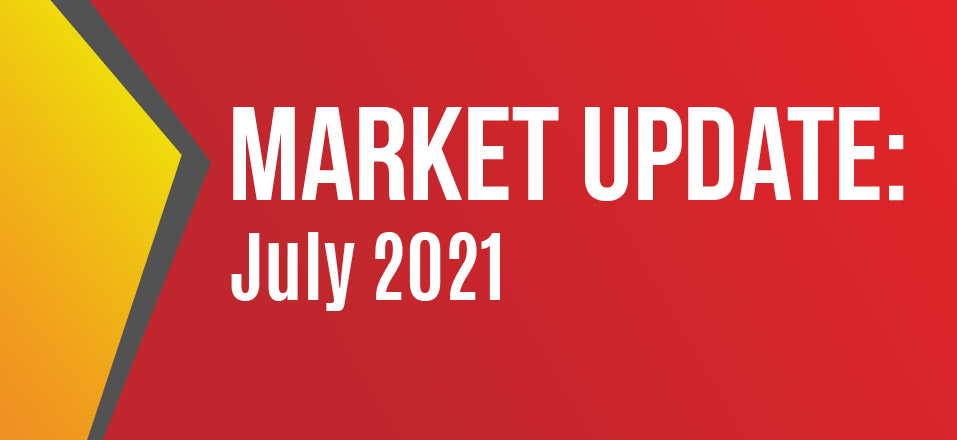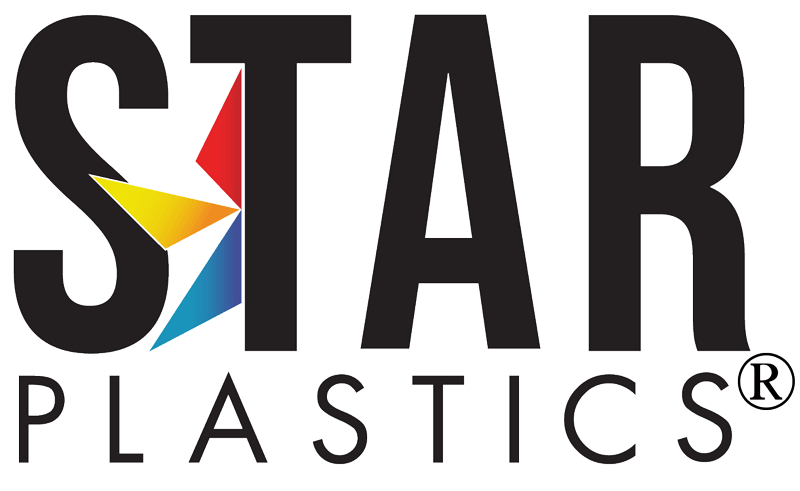News
July Plastics Market Update 2021

What We Saw in July…
The entire plastics industry continues to experience record-setting supplier shortages and cost pressures, with the backlog of orders just shy of May’s record pace. Sales allocations and unbalanced supply-demand continues to drive price increases for most engineering grade resins (specifically including PC, ABS, Nylon 6 and Nylon 6/6).
North America Resin Market
PC
North American prices for polycarbonate increased again, with last minute cost increases being announced in July for August or early September implementation. The announcement itself from Covestro (15 cpp) and Sabic (12 cpp) made immediate impact on the secondary markets seeing the bidding of material up overnight.
PC costing hit a high in Q2, up an average of 15 cpp (beyond previous 30 cpp for the year so far) and is expected to slowly decline 2 – 5 cpp over the next two quarters of 2021 with no new supply coming on board in North America.
At the beginning of July, Mitsubishi raised their PC prices by 15 cpp delivered to NA with no notice for an implementation date. In late July, Sabic released 25 c/kg increases across many of their PC, PCABS PC alloy and polyester lines, effective on all products shipped on or after August 23. Phenol and acetone are still increasing, and this has spurred the increases by Sabic and Covestro.
Demand is still strong, and expected to be stronger in the second half of 2021, with supply at maximum capacity in NA. Operating rates for the majors are up to 90%– Normal maximum % is 85% and the balance is set for preventive maintenance and planned shutdowns. We will pay for this looking forward with the majors running over capacity.
There is no inventory of PC and lead times continue to be at 16+ weeks. North American producers continue to run on sales controls, with PC orders being limited to about 70% of contract amounts–and the delivery of the 70% is sporadic at best. Simply put, PC is sold out through 2021 and we will not see the imbalance start to be normalized until Q2.22.
Imports into NA currently make up 13% of the supply (normally at 30%), but that’s expected to reduce further as container congestion and higher freight costs will keep material local.
ABS
ABS prices in NA were up 7 cpp in July, and 46 cpp year to date, with imported ABS up 52 cpp over the last 4 months alone. As we move forward, we expect prices to rise 5 cpp over the next two months, and hopefully flatten by the year’s end. Similar to PC’s story, demand is strong, and supply is flat.
Domestic plants have reached their upper operating limits in July, and we hope they hold this way through the end of the year. However, order backlogs are still at historical highs and there’s no inventory to help solve the issue before the end of the year. Like PC, ABS supply is sold out through the end of the year and into Q1 2022.
North American producers continue to continue to utilize allocation and sales controls which allows them to delay, decline or cancel orders as they see necessary, and maintain lead times upwards of 18-weeks. This all seems to indicate a potential price increase coming in September 2021 for ABS from the majors.
Nylon
Nylon 6 and 6/6 prices are also on the rise, up an average of 5 cpp since May (beyond the previous 20-40 cpp increases we’ve seen YTD. They remain in tight supply, though production volumes are slowly improving.
Asia Resin Market
PC
Exports of PC are on the rise to Canada, Mexico and temporarily to China (as new plants on coming online there). Sabic is expecting its facility in China to start late Q4-21, though that most likely translates to Q1-22.
Since only 40% of the BPA producer-market not integrated, and BPA supply shifting to epoxy which supports other markets, such as flooring, electronics, can liners, etc, we’re seeing PC costs increasing as a result.
PC imports are reducing based on the current logistics costs to move them to North America at 20 cpp year over year–these are the integrated suppliers who can make more money locally.
ABS
Imported ABS has also gone up 52 cpp in the last 4 months—and with Ineos still under FM and ABS remaining in tight supply, we expect price increases to continue. Ineos’ Ohio plant has been running multiple weeks behind on production, and companies are being allocated 50% of their historical purchases. They’re hoping their Mexico facility will be able to increase ABS capacity by the end of the year to fulfill orders looking forward..
To combat this supply-demand imbalance, Lotte is also planning on converting capacity from EPS to ABS in their South Korea facility. This supply will most likely remain in Asia, so no North American relief there.
Early July, Kuraray Co, a Japanese manufacturer of chemicals, fibers and other materials, announced their Elastomers business unit will raise prices for a range of materials in all regions beginning August 1st. This is the fourth price increase in less than a year (pervious price hikes were in December 2020, February 2021, and April 2021). They are attributing these increases to increasing feedstock, utility, and logistics costs.
Resins Globally…
The plastics processing sector in Europe has also been facing raw material shortages and associated price increases as EU raw material suppliers continue to announce FM declarations. The situation has led to a serious shortage of raw materials, which has been and will continue to disrupt production. This supply / demand shortage echoes similar issues in the US and other plastic-producing countries, so it’s become extremely difficult to import raw materials from elsewhere.
Additives
Fiberglass has gone short in the market, especially after a major fiberglass producer sent out a FM for fiberglass in mid-July. They attribute this FM to recent labor shortages, freight shortages, as well as related to their lack of supply of the base feedstock.
Transportation
North American freight costs are continuing to rise – nearly 200% since this time last year. Certain rail service routes have been suspended (LA to Chicago) to alleviate congestion in an already full system, and crude oil cost is projected to increase from 2020 prices. How long this suspension will be is not yet seen and the increase in fuel costs are long term plays. This puts additional pressure on a dry van / inland line haul system on an already challenged trucking segment!
Container shipping rates from China to the US have hit new highs above $20,000 per 40-foot box as rising retailer orders peak ahead of US shopping season, adding strain to global supply chains. These increases costs are now called premium pricing and it’s the cost to pay to have goods on the shelf for Christmas buys. Spot price per container has also continued to climb, rising above 500% from over a year ago. US ports receiving these vessels still have large lines to be unloaded – Long Beach, CA has an average of 30 vessels waiting at sea to be unloaded every day.
This has caused shipping firms to prioritize the most lucrative routes, reducing volumes to less profitable routes like the transatlantic and intra-Asia.
Chip Shortage
Unlike what we predicted last month… Automakers expect the chip shortage to continue to last. Leaders in the automotive market are seeing that the microchip shortage that has slowed the industry’s production level this year will drag into 2022.
Moving Forward
As August rolls in, we’re already seeing new increases:
- Pallet suppliers credit rising cost for materials, packaging and freight with their recent surcharges.
- Market seems to be indicating a price increase for ABS in the upcoming months, though many believe the home appliance and electronics sectors will slow down as people return to work (though the delta variant may have some other plans).
- We believe that PC prices will have another increase (beyond the August announcements) between now and the end of the year.
In China, we’re beginning to hear that there is an excess material supply, but they can’t get it to the states due to logistics congestion and hyper inflated costs. This together with an economy that has been growing at ‘just’ 8% instead of the 18% they’ve seen over the recent past, is the first sign of a softening market in Asia.
Logistics issues continue to stack up, especially with typhoons of China’s south coast and increasing Delta-variant COVID-19 running rampant. Major Asian ports were shut down due to the inability to staff the port with Covid related staffing shortages. Leaders in the maritime industry expect the extreme rates to last until Chinese New Year 2022.
You are our valued partner, and Star Plastics appreciates and values your business. Please email us at Sales@StarPlastics.com or contact your local Star Plastics representative with questions.



